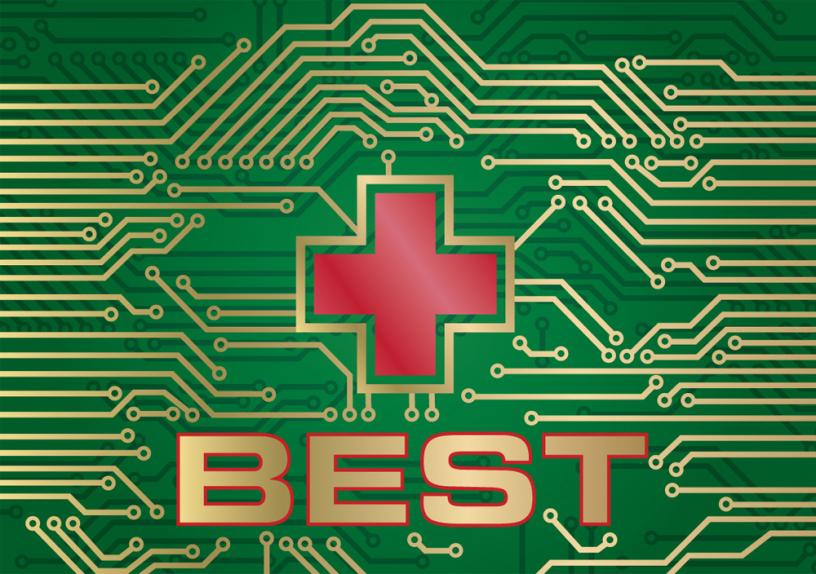Summary
Wound infections are highly prevalent among combat injuries.
They can take otherwise ablebodied military personnel out of operations and result in severe medical complications and death.
The current standard of care for assessing a wound infection relies on identification of the specific infection-inducing microbial pathogens that invaded and colonized the wound via complicated genetic assays or multi-day cell culture approaches, neither of which can be done quickly or simply on the battlefield. The current standard of care for prevention and treatment of a battlefield wound infection is based on broad-spectrum and high-dose antibiotics alongside surgical debridement, which are not pathogen specific, drive antibiotic resistance, can have toxic side effects, require advanced medical training, and result in high treatment costs and burden on medical professionals and patients. A dramatically better approach to managing infection of combat wounds is greatly needed.
The BioElectronics to Sense and Treat (BEST) program seeks to address this need by developing wearable, automated technologies that can predict and prevent a wound infection before it can occur, and to eliminate an infection if it has already taken hold.
To achieve this vision, BEST performers will develop novel bioelectronic smart bandages comprised of wound infection sensor and treatment modules. The sensors will be high-resolution and provide real-time, continual monitoring of wounds based on, for example, microbial wound community and/or host signatures. Data from these sensors will be used to predict if a wound will fail to heal due to infection, diagnose the infection, and regulate administration of targeted treatments by closedloop control to prevent a predicted infection or to resolve an existing infection so that the wound heals.
Given that infection initiates at the time of injury and can take hold before medivac under anti access/area denial conditions, to have the greatest impact these technologies need to be pushed forward for use on the battlefield. Even if medivac occurs immediately, without the ability to prevent infection, the downstream care required to treat the surge of wound infections resulting from a large-scale combat operation will overwhelm care capacity.
Key to success of the BEST program will be technologies that:
- Adapt to variations in the wound microbial community composition
- Adapt to variations among individuals
- Continually update the status of a wound to intervene when indicated to fail
- Utilize nonantibiotic treatments to which microbes cannot develop resistance due to high rates of antibiotic resistant combat wound infections
- Does not interfere with a wound that is predicted to heal on its own
By the end of the program, the sensor and treatment elements will be combined into a low size, weight, and power (SWaP), closed-loop device that can provide rapid predictions and precise treatments and can be deployed at all roles of military medical care including the battlefield. Specific target metrics will be described in the forthcoming BEST Program Solicitation.
The technical objective of the BEST program is to develop technologies to TRL-5 (prototype technology produced at pilot scale that undergoes rigorous testing). In pursuing this objective, it is imperative that performer teams propose technologies that when fully developed (i.e., TRL-8, completed clinical evaluations) are reasonably expected to be mass produced at non-prohibitive costs; are reasonably expected to operate in remote and austere environments including battlefields; and are reasonably expected to be low size, weight, and power (SWaP) for use on battle fields.
In support of the BEST performer technical research efforts, DARPA and members of the Government team will make datasets available to performer teams that relate wound microbial community composition to the host immune state and the wound outcome (healed or failed to heal due to infection). In addition, DARPA will utilize Government combat wound and infection subject matter experts (SMEs) to engage with performer teams on a regular basis and assess and provide feedback on the technical aspects of the performer team efforts.
In addition to pursuing the technical objectives, BEST performers will be expected to plan for transition of their approaches and prototypes. This will include developing and executing effective strategies to prepare for regulatory, clinical, and commercialization next steps with the objective of creating opportunities for advanced development and follow-on funding from private and/or government sponsors. For the regulatory strategy, the goal is generation of a preclinical dataset in large animal models and preparation of a regulatory package such as an Investigational Device Exemption (IDE) for submission to the Food and Drug Administration (FDA). For the commercialization strategy, the goal is generation of a Financing and/or Investor Engagement Plan.
Beyond the battlefield, wound infections are a risk to many patients (e.g., those with diabetic foot ulcers). As such, BEST performers will be expected to address relevant military and civilian clinical and market needs in their transition strategies.
In support of BEST transition efforts, DARPA will utilize Government regulatory and commercialization SMEs to engage with performer teams on a regular basis and assess and provide feedback on the regulatory and commercialization aspects of the performer team efforts.

